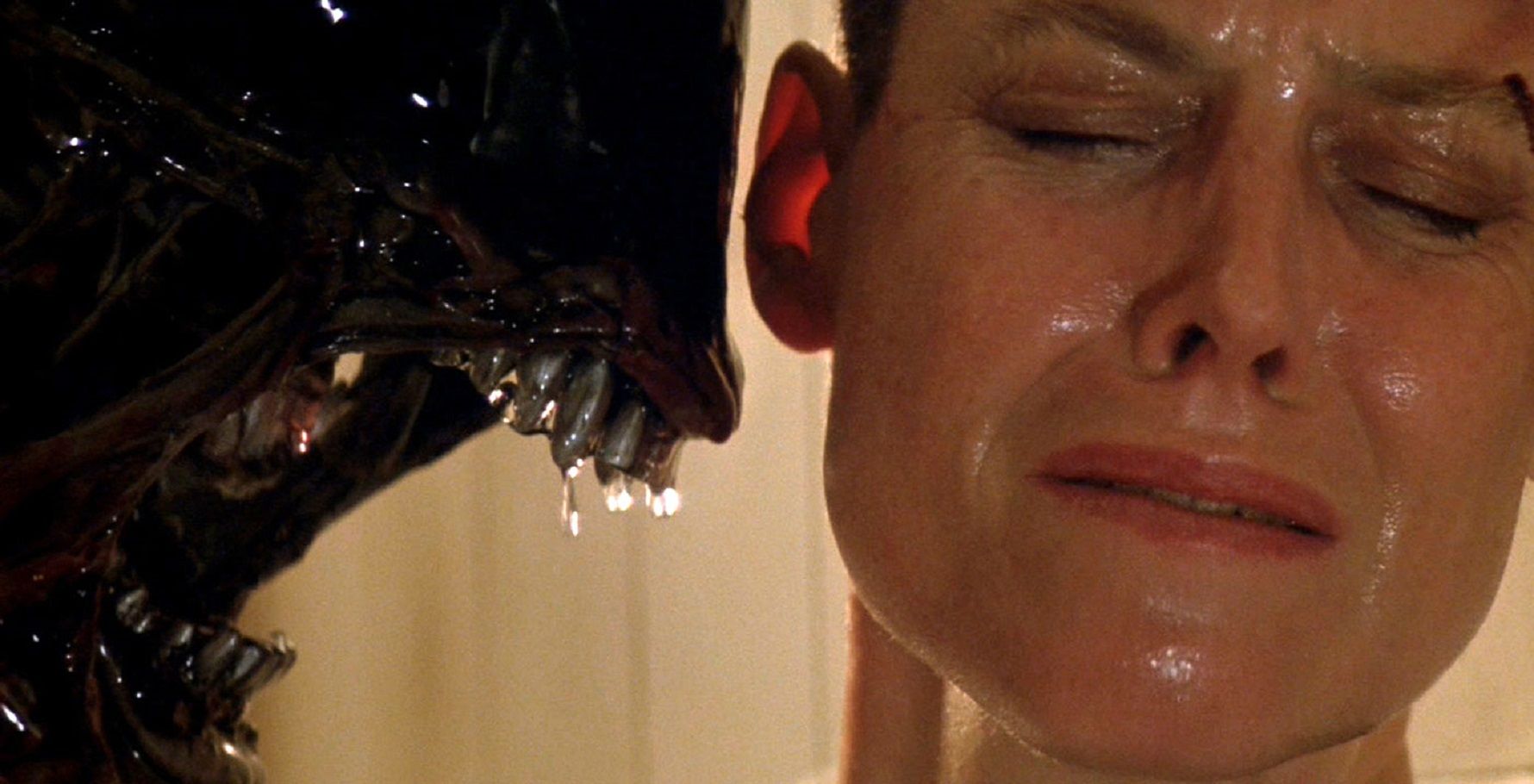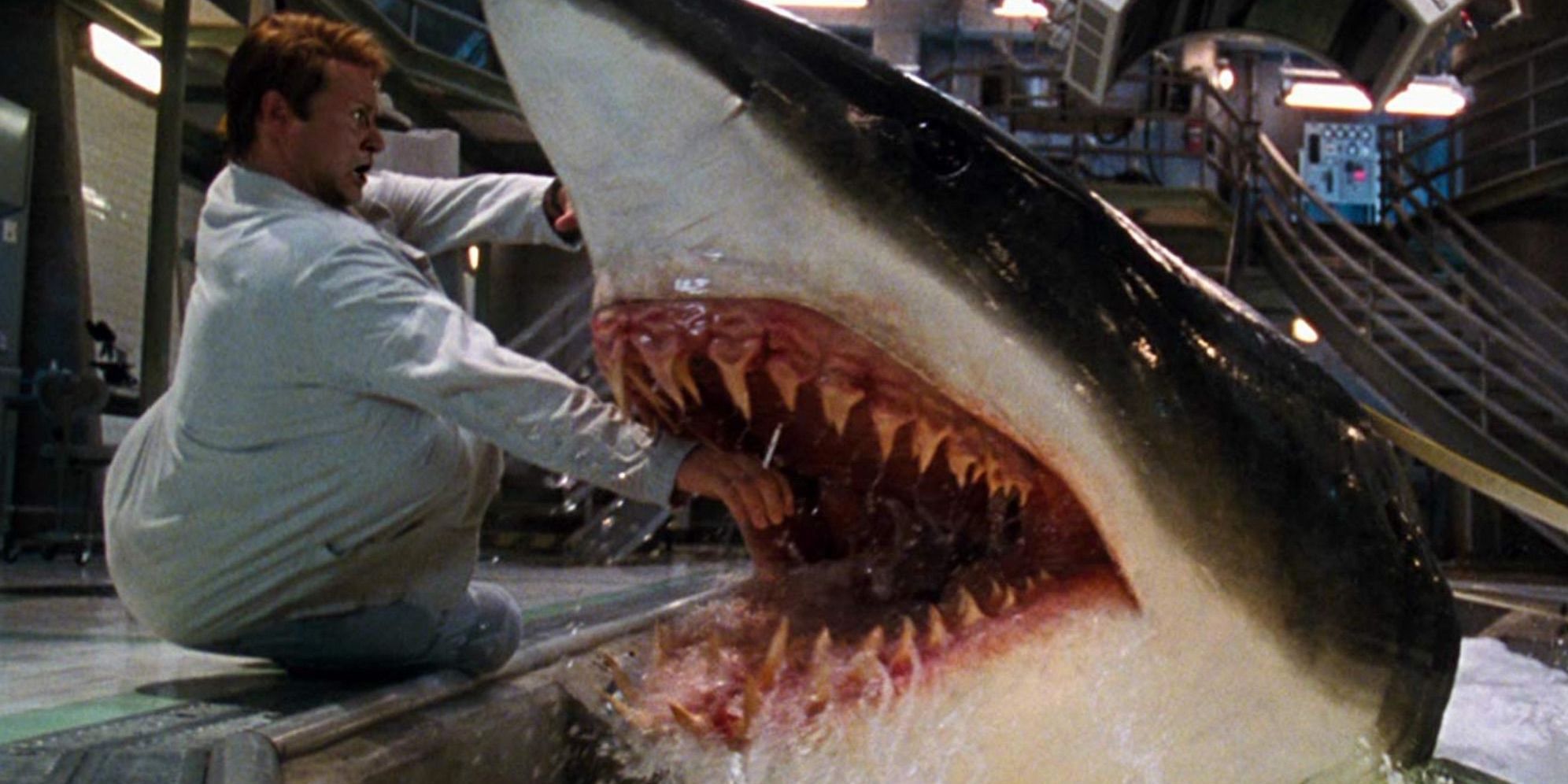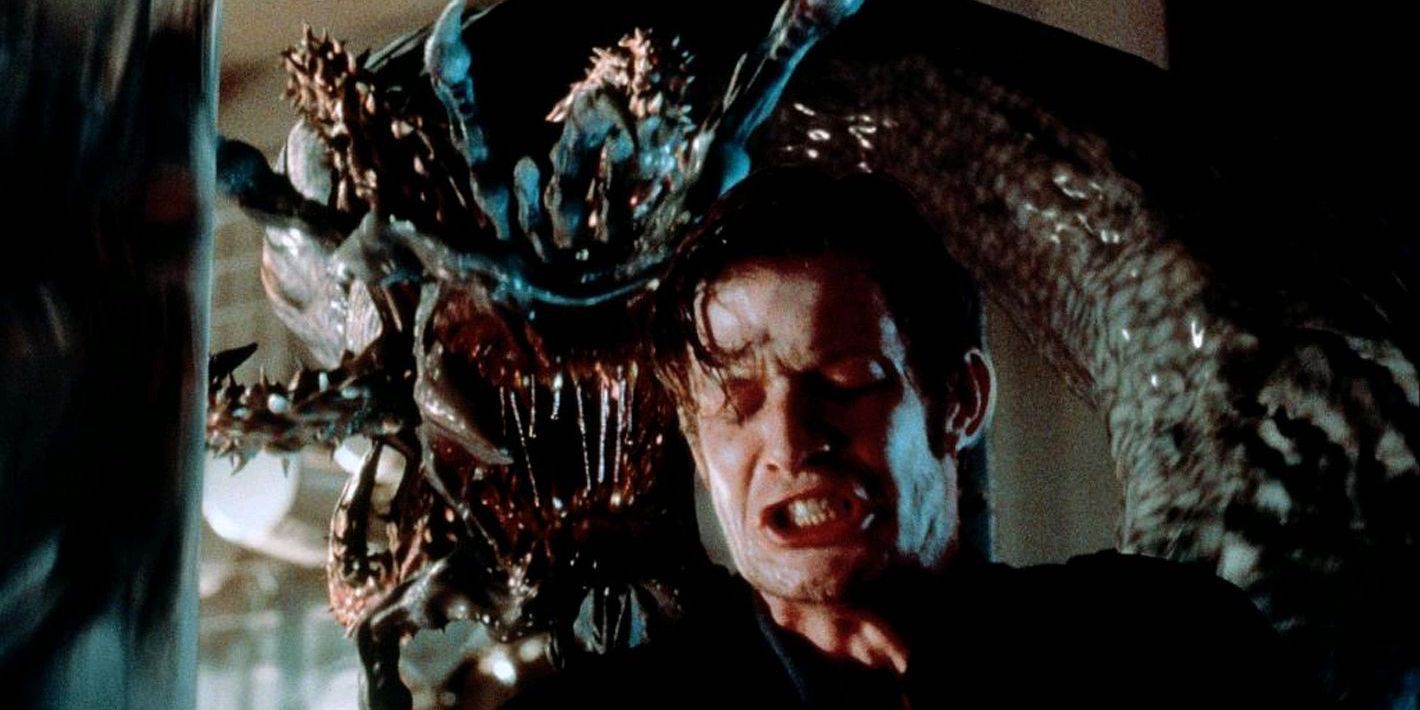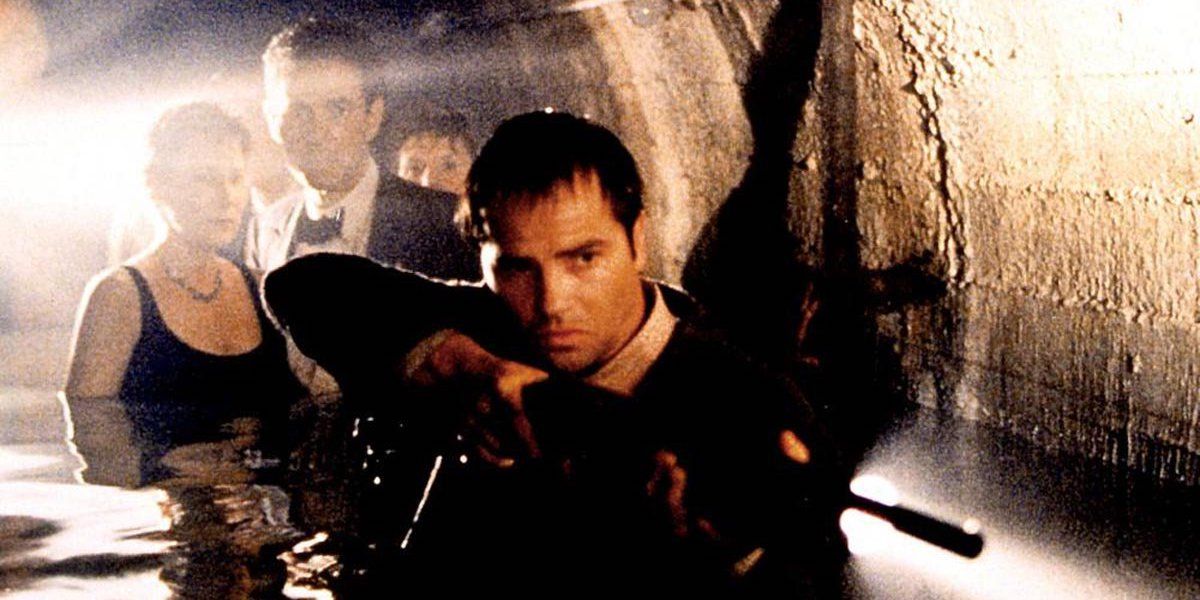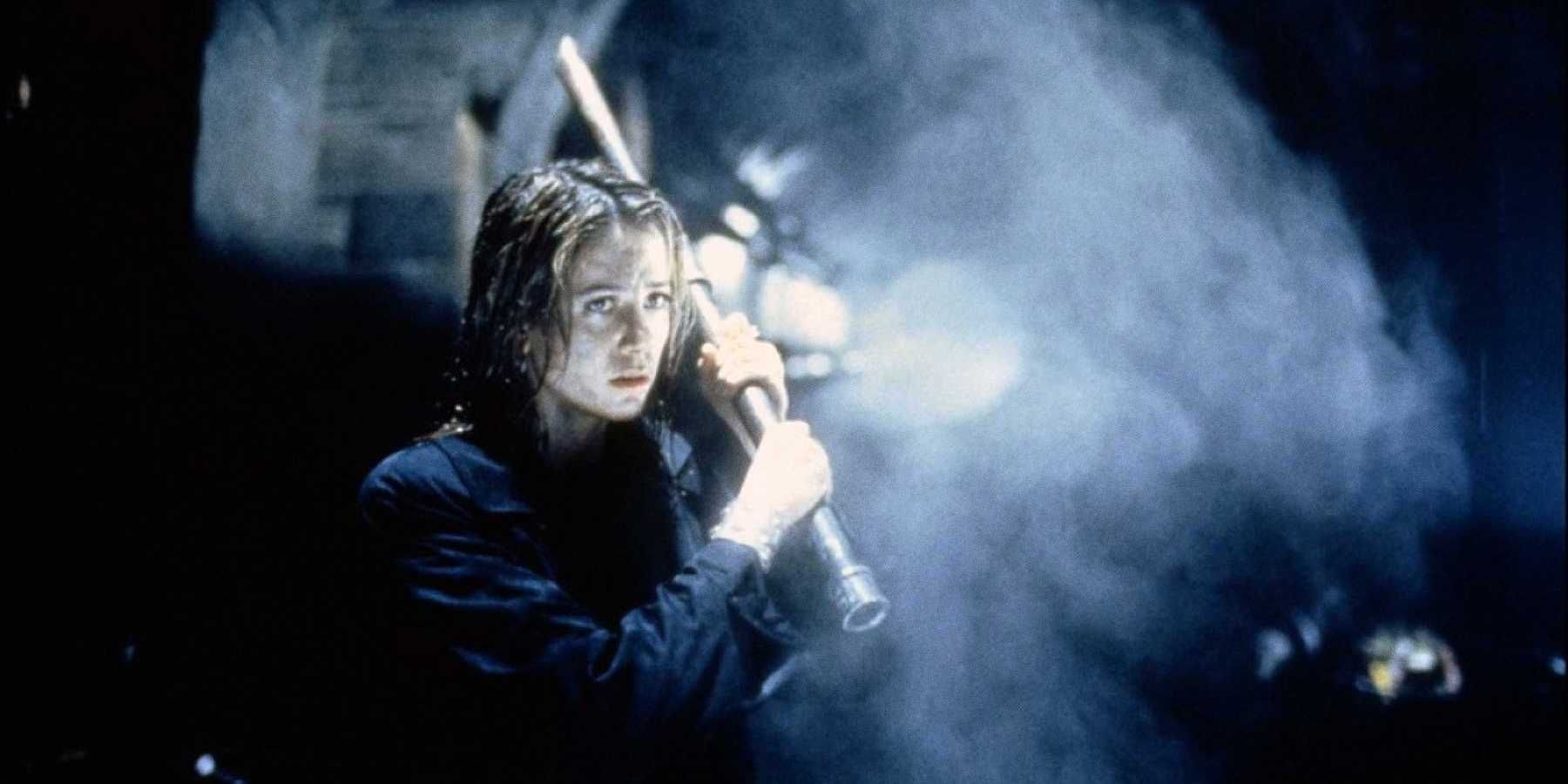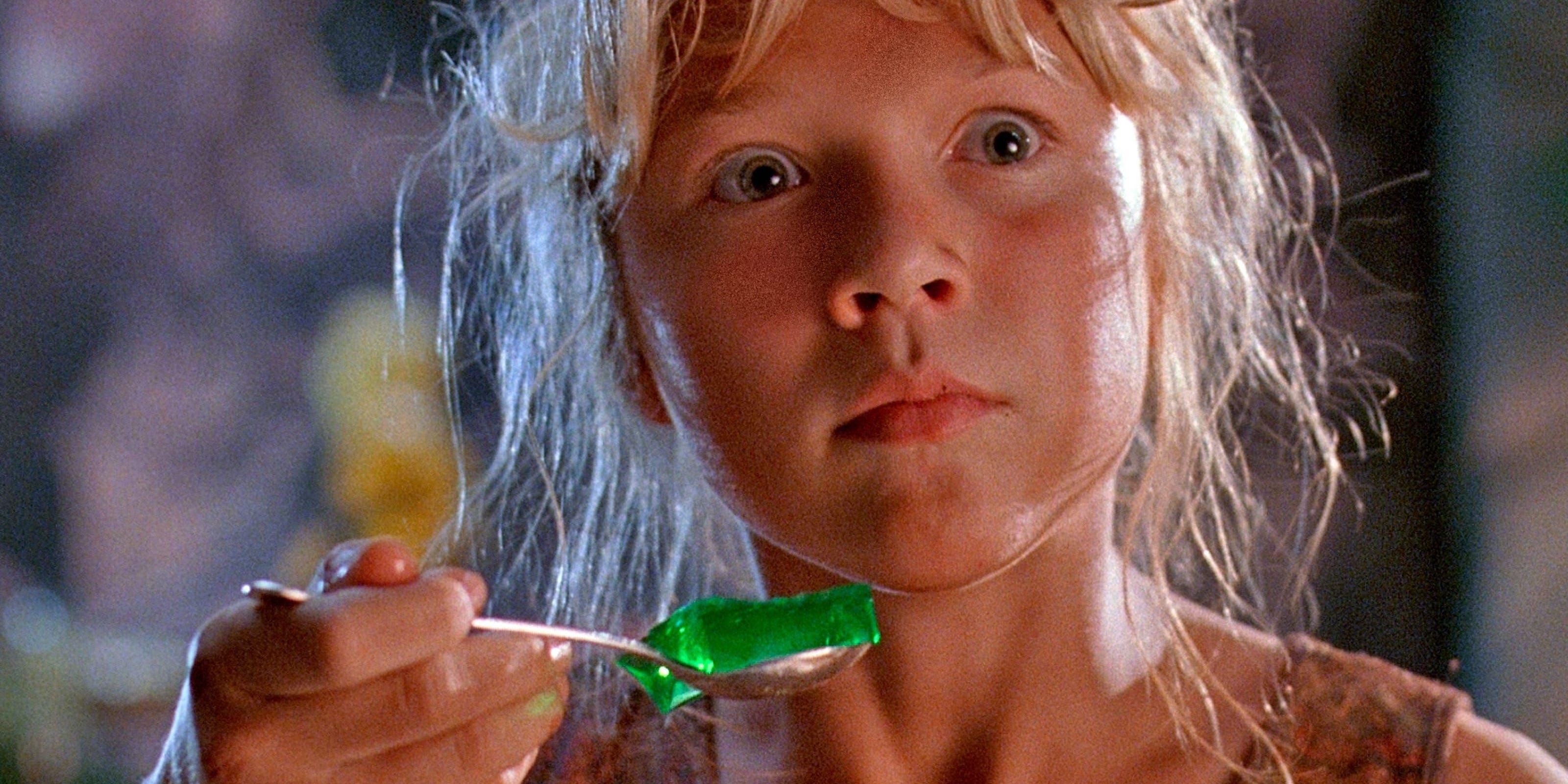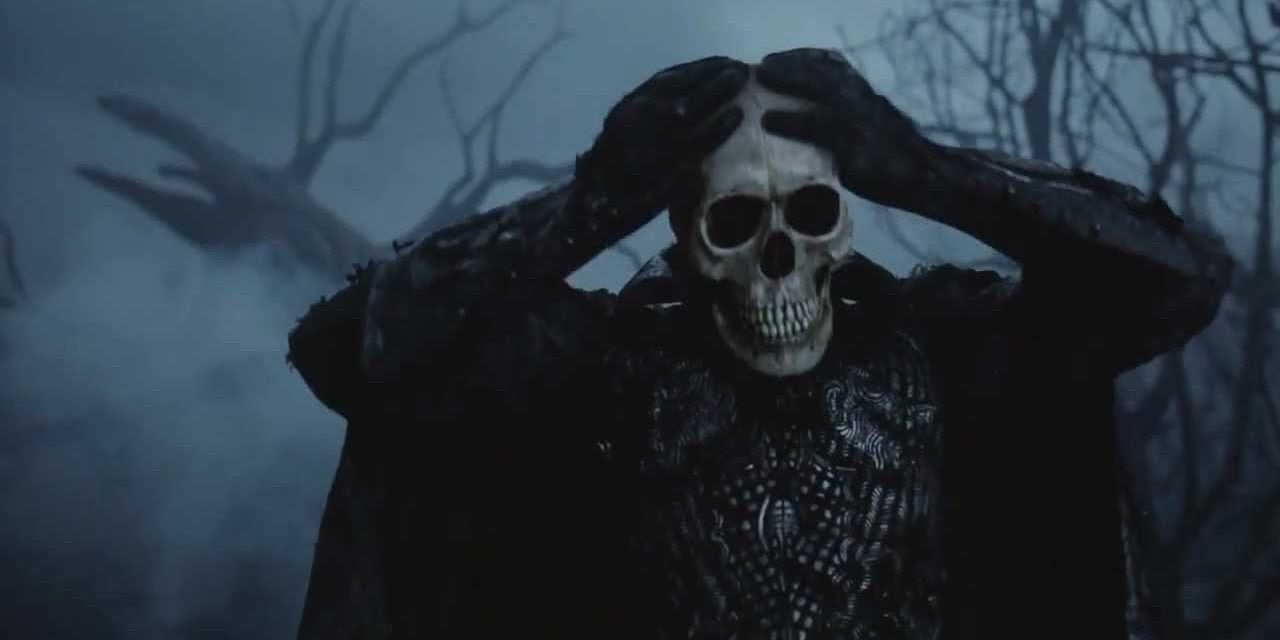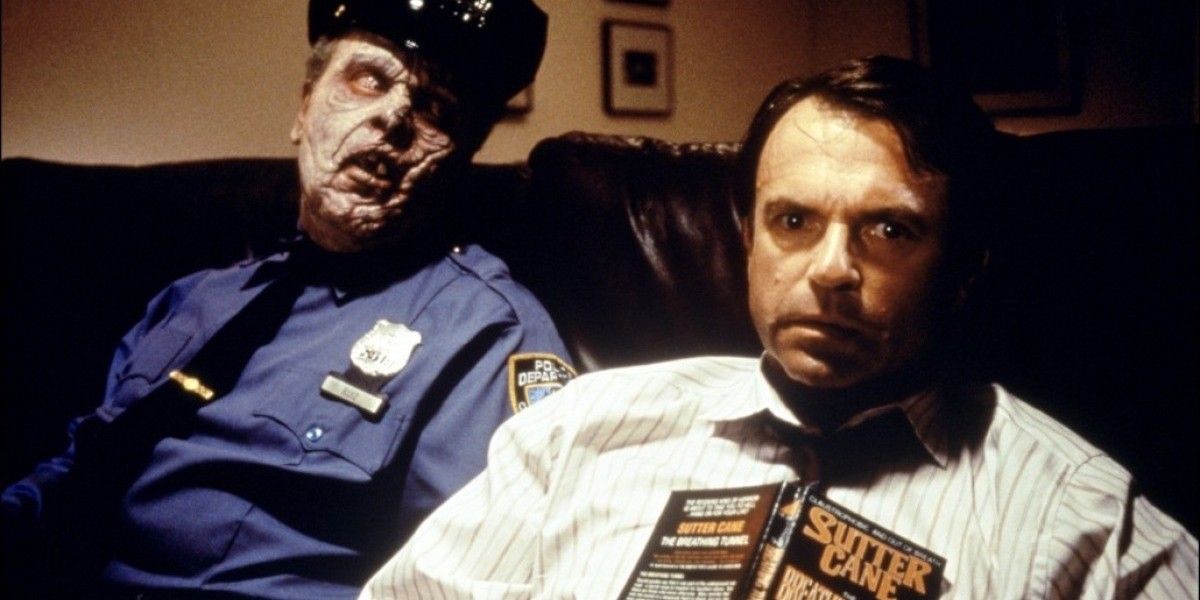When you hear the term ‘monster movie,’ you may automatically think of Boris Karloff shuffling around with bolts through his neck, or Bela Lugosi in his iconic Dracula cape. However, the genre, though not as big a draw as it once was, is something that’s clung on to life just like a lot of its terrifying antagonists. More recent decades have brought us many more great entries than you may think.
The 1990s, for example, saw the release of a number of gory (and sometimes gorgeous) monster movies that made fans scream in fear and laugh in amusement. Here are our picks for the ten most terrifying monster movies of the 90s.
Deep Blue Sea (1999)
Renny Harlin’s underwater horror-thriller sees a group of scientists --and stock action movie characters-- trapped in a deep-sea laboratory that’s become overrun by genetically engineered sharks with super-brain powers.
As predictably corny as that premise sounds, Deep Blue Sea finds lots of ways to be genuinely surprising and original with its character deaths. A particularly shocking one about halfway through is a real Hall of Famer.
Virus (1999)
The big-screen adaptation of Chuck Pfarrer’s comic book of the same name was a resounding flop with critics and audiences when it first came out, but it's gained a cult following over the decades thanks to its plentiful monster designs and practical effects.
The movie follows a group of sea salvagers who come across a derelict military vessel. Little do they know that it had been taken over by an alien force that killed the crew to reconfigure their corpses into creepy zombie cyborgs.
Deep Rising (1998)
Just one year before his massive crowd-pleasing success with monster movie hit The Mummy, director Stephen Sommers released a very similar monster horror movie that possessed the same sense of fun, but with the gore aspect cranked all the way up.
Like Virus, Deep Rising is about a crew of ne'er-do-wells who find themselves on a cruise ship that’s already been emptied by an unseen monster. The beast is looking to eat them alive with its terrifying tentacles that are roaming about the ship.
The Relic (1997)
Peter Hyams’ much more conventional monster movie sees an ancient monster --specifically evolved to rip your head off to suck out your brains-- let loose in the Chicago Field Museum.
The Relic is an underrated choice for horror fans who can't get enough of the build-up. Hyams doesn’t show the monster much at all early on, but it all ramps up steadily to a kill-fest in the third act when a packed black-tie event gets locked inside the museum with the hungry beast.
Mimic (1997)
Guillermo del Toro’s movie about giant killer insects would ultimately prove a success for the Mexican director in his Hollywood debut. It spawned two sequels, despite his well-documented conflict with Miramax producers Bob and Harvey Weinstein.
Mimic contains a number of the idiosyncrasies and carefully-crafted hallmarks that would make Guillermo del Toro one of the most respected names in the film business.
Jurassic Park (1993)
What is there left to say about Steven Spielberg’s iconic dinosaur thriller that hasn’t already been said? If you haven’t seen it yet, what on Earth have you been doing with your free time? Even if you have, here’s your periodic reminder that it’s lost none of its wow factor over the decades.
The effects are still used perfectly to keep a timeless feel in a movie driven by VFX and the plentiful scares still never feel cheap. It’s a rollercoaster ride that never gets old. Immortalized like its crowning monster achievements, the imposing T. Rex and the fearsome Velociraptors.
Alien 3 (1992)
David Fincher’s threequel in the seminal sci-fi horror franchise received little love when it was released. Its better aspects have become progressively more and more appreciated over time, though, especially thanks to a longer Special Edition cut of the movie that was released over a decade later.
Alien 3 provides an unsatisfying and somewhat hollow end to threads left from James Cameron’s hugely popular sequel, Aliens. Nevertheless, its confidence in striking out on its own and getting back to minimalistic basics assists in giving it a unique character. One that’s bolstered by its distinctly bleak industrial environments and H.R. Gieger’s iconic monster design.
Sleepy Hollow (1999)
Tim Burton’s gothic fairytale of the Headless Horseman and its bloody rampage through the titular village of Sleepy Hollow still holds up twenty years down the road, thanks to its unrepentantly macabre style.
It’s a familiar movie for fans of Burton’s overall aesthetic, with frequent collaborators Johnny Depp and Danny Elfman on top form. However, it’s also the most out-and-out horror movie of his back catalog so far and was nominated for three Oscars, winning one despite the Academy’s famous aversion to the genre.
In the Mouth of Madness (1994)
The final part of director John Carpenter’s Apocalypse trilogy (which also includes 1982’s The Thing and 1987’s similarly underrated Prince of Darkness) is a memorably unique, and dreamlike, take on the Stephen King era of American horror that mixed literary tradition with post-modern monster frights.
It concerns Sam Neill’s insurance investigator as he tracks down a missing author to a small town that was previously presumed to be only fictional. There, reality begins to blur as a story of ancient Lovecraftian monsters breaking free into our world starts to take shape.
Bram Stoker’s Dracula (1992)
Francis Ford Coppola’s adaptation of the foundational horror novel was met with plenty of jeers, but any lapses in dramatic realism are quickly and entirely overshadowed by the incredible depth and detail of the production design.
Bram Stoker’s Dracula throws itself so completely into its gothic romanticism that it becomes impossible not to be swept up in its horror and its passion for the classic story. It’s a movie bursting with cinematic creativity and nightmarish peculiarity.

